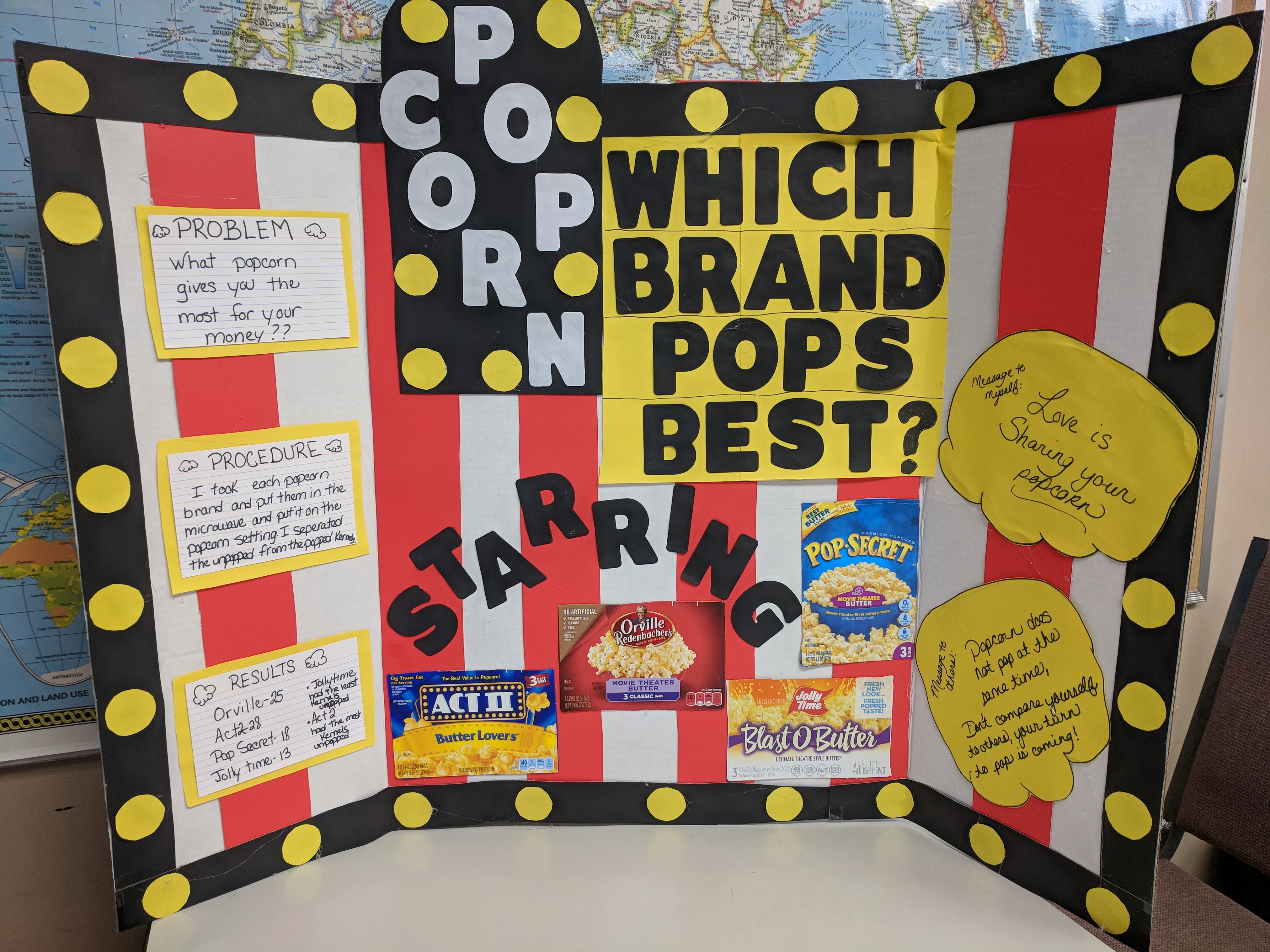
Middle School Science Fair
Information Page

The purpose of the Science Fair is to demonstrate an understanding of the topic and explain the purpose and design as it relates to the student through a Biblical worldview. Science Fair occurs every other year in Middle School with the Social Studies Fair being in rotation on the other years. Students are encouraged to choose a topic of their own special interest. All topics must be approved by the Science teacher.
All students are encouraged to do an experimental project, but grades 5 and 6 have the option of doing either an informational project or an experimental project that engages the scientific method. In 7th and 8th grade, students must have an experiment using the scientific method. The Scientific Method will encompass 5 major points. 1. Ask questions 2. Form a hypothesis 3.Conduct an experiment 4.Collect data and 5. Draw a conclusion. These five points should be explained in detail throughout their paper. The requirements for the research paper can be viewed below.
We encourage students to show their work by way of video, photographs, and/or demonstration. Students may choose to present their project on a tri-fold board or by creating a power point presentation. The requirements for the board and the power point are the same: it should be titled, include graphics/photos with captions, must contain Scripture which applies to the topic, and show creativity and professionalism (no spelling or grammar mistakes). Should a student choose the power point, a minimum of 15 slides are required (10 slides for 5th/6th grades).
Middle School Research Paper Requirements
5th and 6th Grades: A minimum of two pages long if typed, double spaced, 12 point printed font and no gaps between paragraphs. Graphics are not accepted as part of the page requirements. Four pages long if neatly printed by hand. Hand printed papers must be single spaced. Parents may assist 5th graders with typing their paper.
The Biblical worldview is a very important part of this expirience. Scripture must be included in the paper and on the visual presentation. Make sure you discuss your hypothesis, experiment, data, and results, and how Biblically this relates to life!
Cover Page must include: Name, Date, Champion Christian Middle School Science Fair, Topic
Bibliography: At least three resources required; one internet, one book, and one student choices.
(See examples below)
7th and 8th Grades: Students must write a minimum of four pages. Paper must be typed, double spaced, 12 point printed font and no gaps between paragraphs. Graphics are not accepted as part of the page requirements. Scripture must be included in the paper and on the visual presentation. Hand written papers are not accepted.
The Biblical worldview is a very important part of this expirience. Scripture must be included in the paper and on the visual presentation. Make sure you discuss your hypothesis, experiment, data, and results, and how Biblically this relates to life!
Cover Page: Name, Date, Champion Christian Middle School Science Fair, Topic
Bibliography: At least four resources required, two online sources, and two books.
( See included examples )
A bibliography page is required at the end of the report. The following examples demonstrate how to create a bibliography.
The next Science Fair will be held in March of 2026.
Missing any deadline will effect the final grade of the paper. Any evidence of plagerism will also effect the final grade (not giving credit to a source or copying word for word any part of a sentence.) Exodus 20:16, Colossians 3:1-5, Ephesians 5:3-10
MLA and APA Research Paper Update on Reference Style
Reference: Book with More than One Author
Natarajan, R., & Chaturvedi, R. (1993). Geology of the Indian Ocean.
Hartford, CT: University of Hartford Press.
Hesen, J., Carpenter, K., Moriber, H., & Milsop, A. (2007).
Computers in the business world. Hartford, CT: Capital Press.
. . . and so on. The abbreviation et al. (for "and others") is not used in the reference list, regardless of the number of authors, although it can be used in the parenthetical citation of material with three to five authors (after the initial citation, when all are listed) and in all parenthetical citations of material with six or more authors..
Reference: Single-Author Book
Alverez, A. (1990). The savage god: A study of suicide. New York: Random House.
Reference: Book Without Author or Editor Listed
Webster's New Collegiate Dictionary. (1999). Springfield, MA: G. & C. Merriam.
Reference: Journals/Periodicals
Use inclusive page numbers. Do not use the abbreviations "p." or "pp."
Heyman, K. (2006). Talk radio, talk net. Yahoo!, 3, 62-83.
Maddux, K. (2008, March). True stories of the internet patrol. NetGuide
Magazine, 88-92.
Reference: Newspaper Articles
If the article is "signed" (that is, you know the author's name), begin with that author's name. (Notice the discontinuous pages.)
Poirot, C. (2007, March 17). HIV prevention pill goes beyond
'morning after'. The Hartford Courant, pp. F1, F6.
If the author's name is not available, begin the reference with the headline or title in the author position.
New exam for doctor of future. (2010, March 15). The New
York Times, B-10.
Reference: Personal Interview, Phone Conversation
1. Because this material is not recoverable (i.e., it is not possible for someone else to see or hear it), it should not be listed in the list of References. It can, however, be listed parenthetically within the text. It is extremely important that what is cited in this way be legitimate and have scholarly integrity.
(interview):
(R. Wilbur, personal communication, March 28, 1999)
(phone conversation):
According to Connie May Fowler, the sources for her novel Sugar Cane
were largely autobiographical (personal communication, July 22, 2002).
Reference: Electronic Resources
Benton Foundation (1998). Losing ground bit by bit: Low-income communities in the information age [Electronic version]. Retrieved June 27, 2008, from
http://www.benton.org/Library/Low-Income/two.html